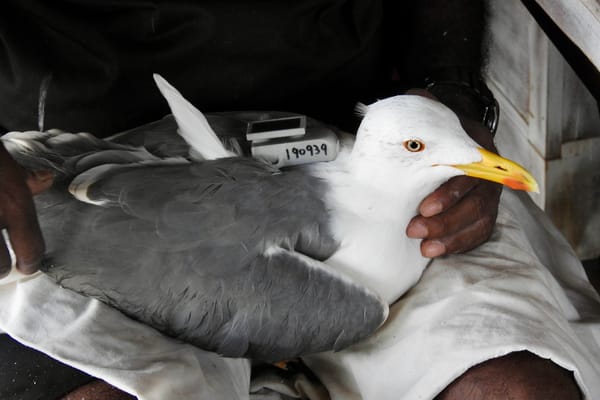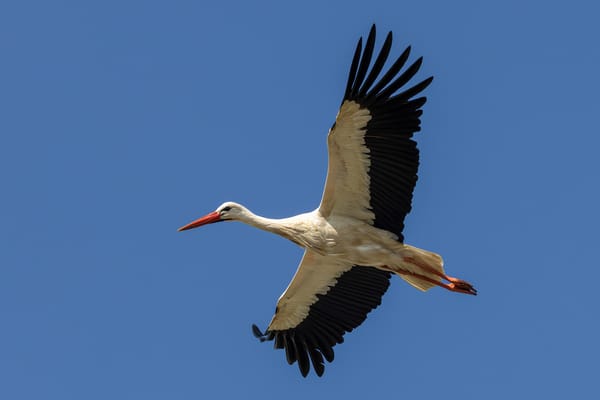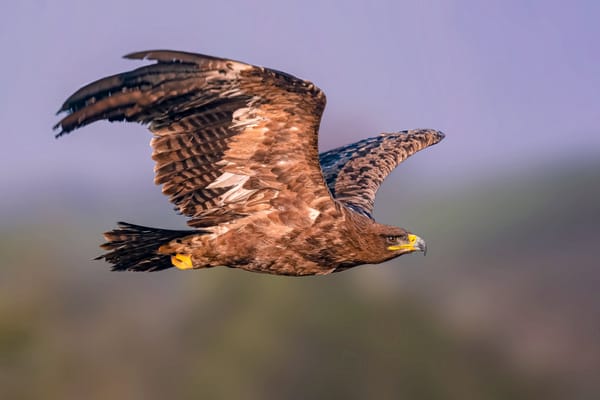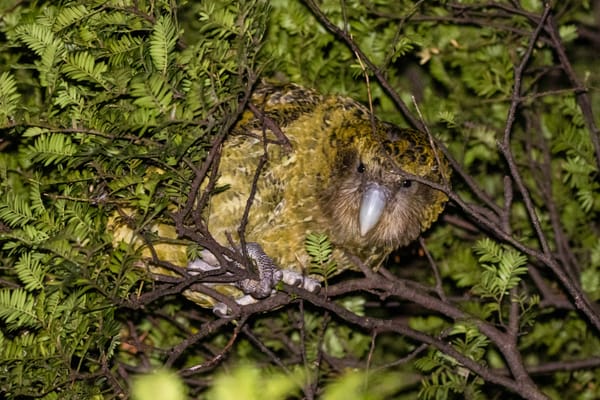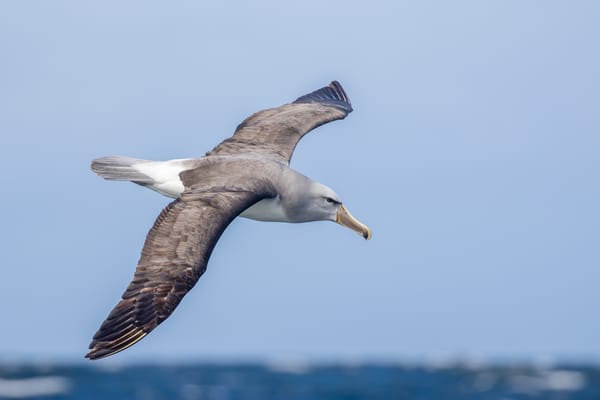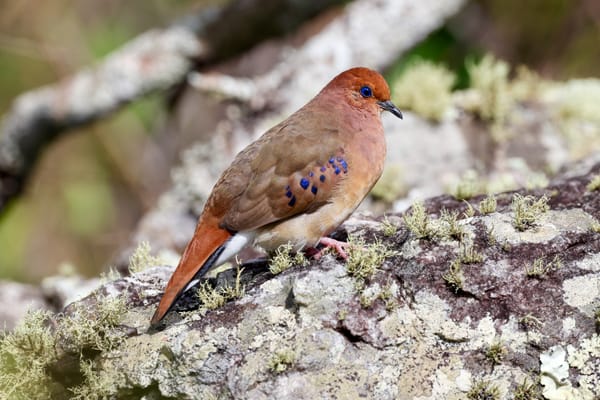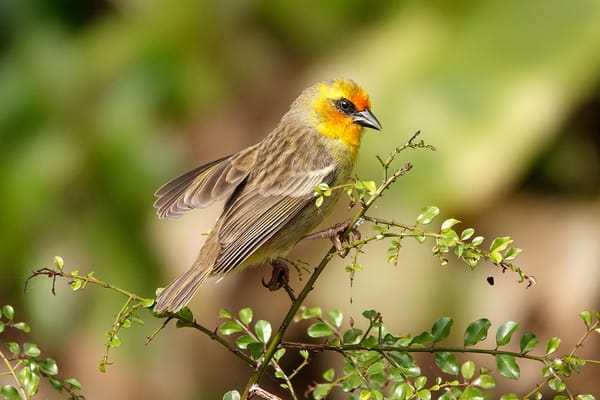A tropical gull with Arctic ambitions
When we think of long-distance bird migration, our minds often conjure images of sandpipers flying nonstop across oceans or raptors riding thermals between continents. But one of the most overlooked players in this global phenomenon is the Lesser Black‑backed Gull (Heuglin’s Gull) (Larus fuscus heuglini), a large-bodied coastal gull that winters in the tropics and breeds in the high Arctic. Now, a new study has shed light on its remarkable journey – revealing an unexpected migratory corridor that bisects the vast Eurasian landmass.
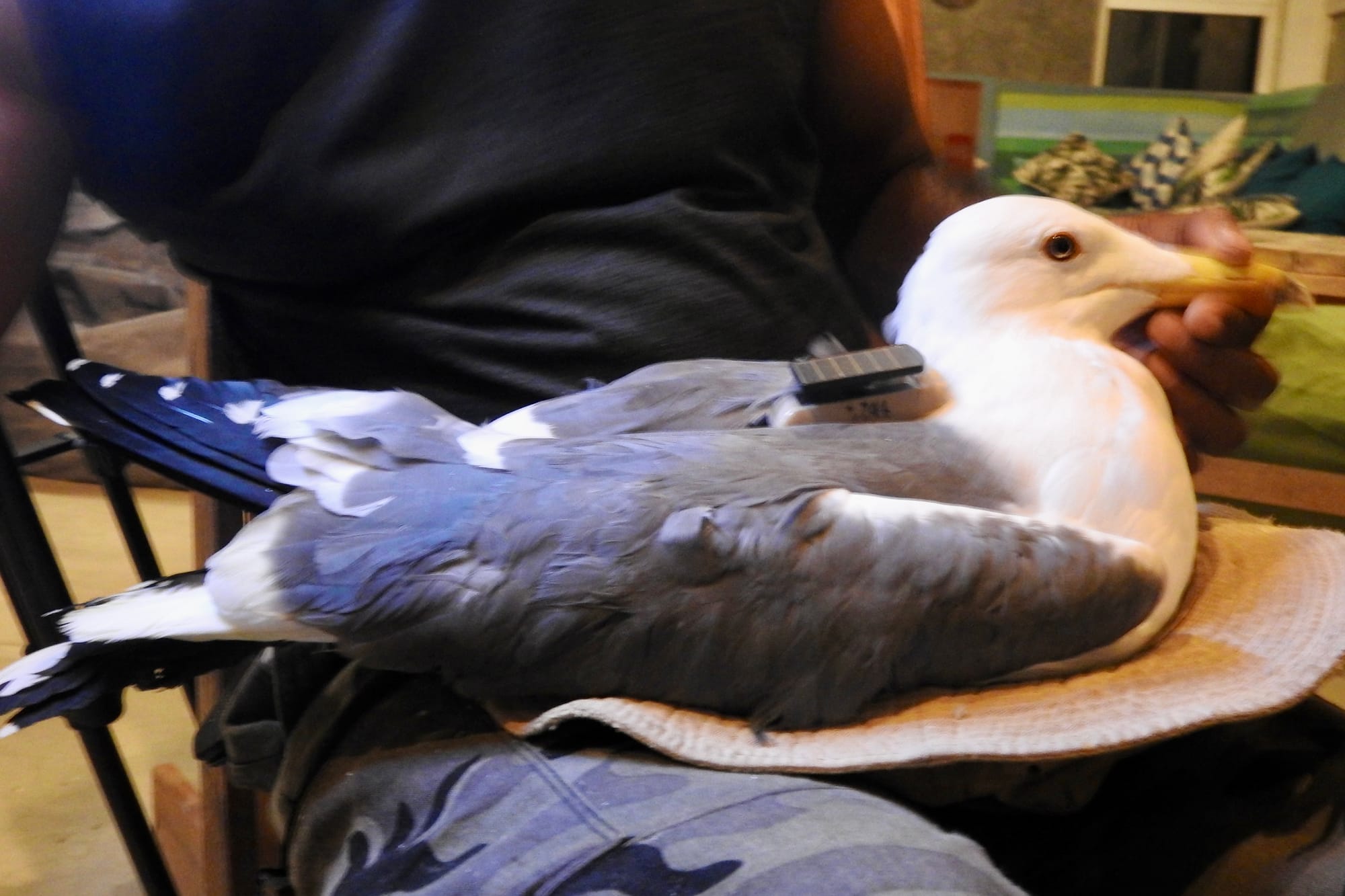
Using GPS-GSM tags, researchers from Sri Lanka, China, and India tracked the movements of three Lesser Black‑backed Gulls (Heuglin’s Gull) between 2021 and 2023. What they discovered was not a direct flight along the shortest route, nor a maritime cruise hugging coastlines – but an intermediate path that blends coastal and overland strategies, traversing thousands of kilometres from the Indian Ocean to the Russian Arctic.
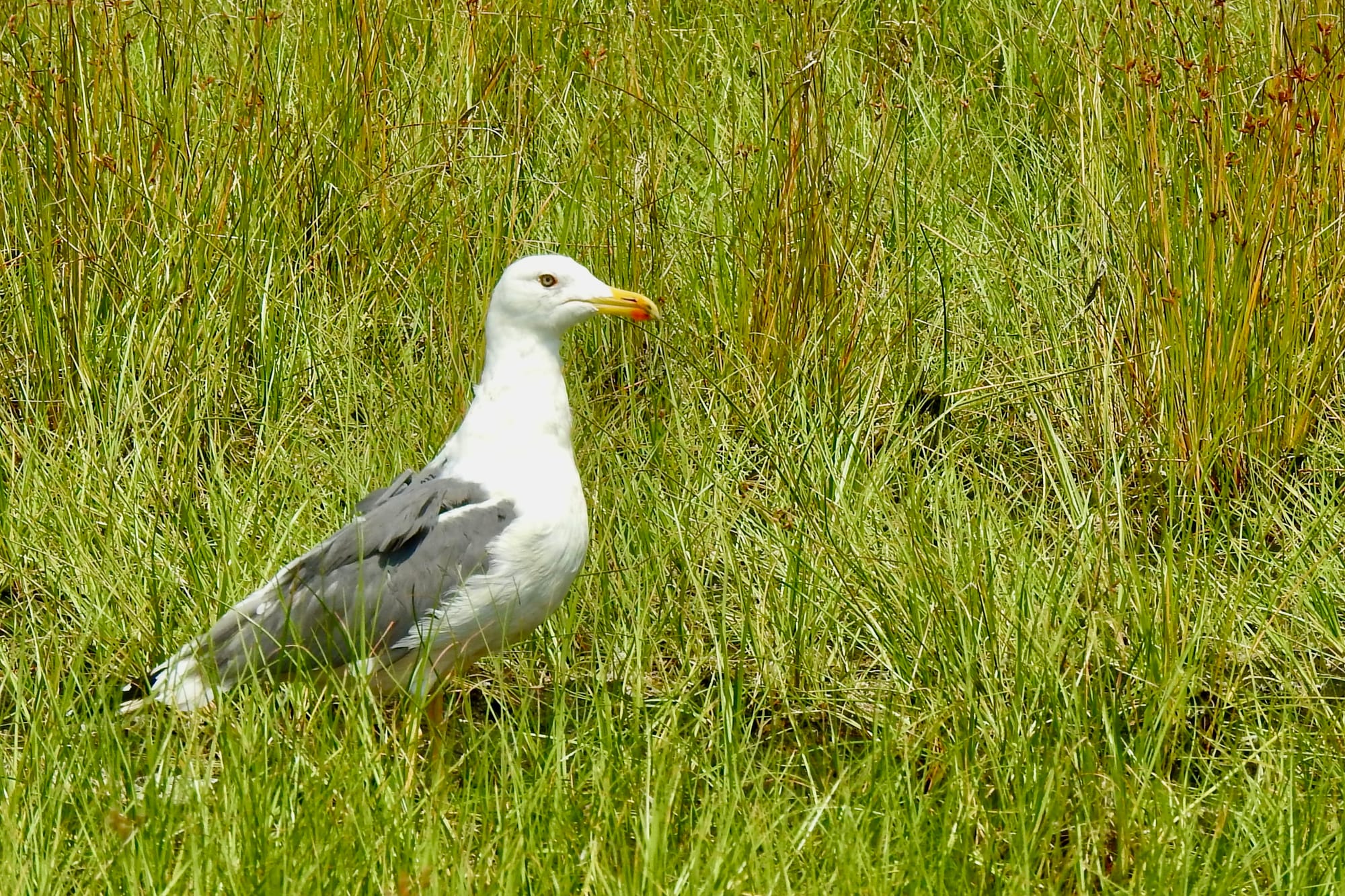
A newly charted route through the Central Asian Flyway
Tagged on Sri Lanka’s Mannar Island, the gulls first crossed to India’s western coast before navigating northwards through Pakistan, Afghanistan, and Central Asia – eventually reaching the Yamal Peninsula in Arctic Russia. Their route, totalling around 8,000 km, bypassed the theoretically shorter trans-Himalayan corridor (6,346 km) and the far longer maritime route via the Suez and Atlantic (15,000 km). This deviation increased the overall migration distance by approximately 30%, but spared the birds the cost of flying over extreme elevations such as the Himalayas (over 6,000 m a.s.l.).
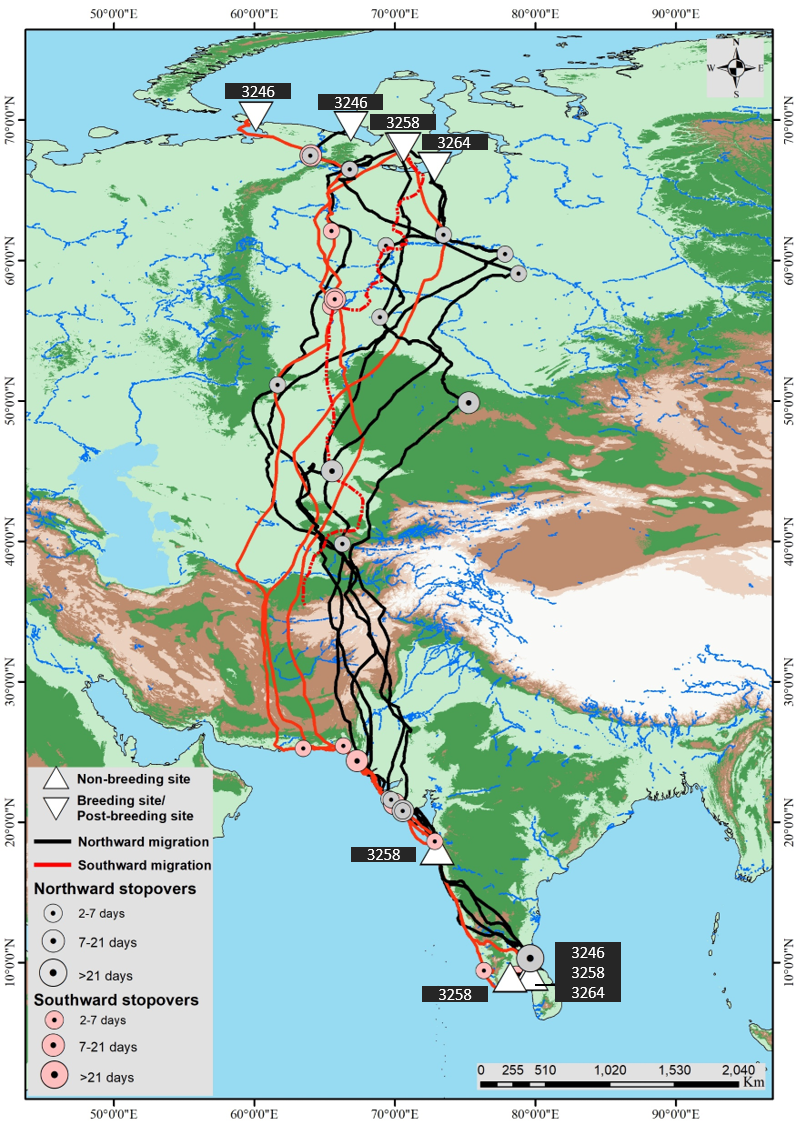
Instead, they flew mostly over lowlands, averaging just 323 m above sea level. Only 9% of their flights crossed ground elevations above 1,000 m. By following river systems and wetland-rich landscapes – particularly the Ob River basin – the birds likely found suitable stopover sites and avoided the physiological demands of high-altitude flight.
Start with a FREE membership
Read selected content with a free account. To unlock all other premium articles, join us for just £4.99/month. You're supporting independent journalism, bird science and conservation.
A migration fuelled by flexibility
The gulls exhibited a flexible mix of travel strategies. Northbound, they made more stopovers in Central Asia. Southbound, they bypassed these regions entirely, suggesting either better fuelling from Arctic breeding grounds or favourable tailwinds. Interestingly, their stopover duration – not actual flight speed – had the strongest influence on total migration time.
While the birds mostly flew during the day (88% of all movement), night flights played a surprising role during southward migration, comprising up to a third of the total migration distance. This contrasts with other large gulls and may hint at an adaptive response to harsh or resource-scarce regions.
Lesser Black‑backed Gulls (Heuglin’s Gull) also appear to use a “fly-and-forage” strategy – soaring when possible and searching for feeding opportunities en route. This likely explains why their average instantaneous speed was relatively high (~47 km/h), but their overall daily progress more modest (409 km/day). The balance of speed, rest, and foraging seems finely tuned to their ecological context.
Implications for conservation and research
This study is the first to document a consistent transcontinental migration route for a seabird in the Central Asian Flyway, long considered one of the least understood of the world’s major migratory corridors. By uncovering this passage, the research not only advances our understanding of gull migration ecology but highlights the broader significance of Eurasian wetlands, coasts, and inland stopovers for long-distance migrants.
The findings carry urgent conservation implications. Tropical coastal zones – such as those used by wintering Lesser Black‑backed Gulls (Heuglin’s Gull) – are under mounting pressure from coastal development, pollution, and climate change. Protecting these areas is essential not just for gulls but for dozens of other migratory species that rely on similar corridors.
Moreover, the study contributes to growing evidence that some seabirds, traditionally thought to favour oceanic routes, can and do adapt to overland migration when topography and resources allow. The observed overlap with the Steppe Gull (Larus fuscus barabensis) – a closely related subspecies – raises new questions about evolutionary divergence and the shaping of migratory strategies.
A window into unseen journeys
As the authors note, the Lesser Black‑backed Gull (Heuglin’s Gull) remains one of the least understood Arctic-breeding gulls. Thanks to advances in GPS tracking and international collaboration, this gap is slowly closing. The study underscores the power of modern technology to reveal not only where birds go, but how they make decisions in the face of geography, energy demands, and environmental change.
Professor Sampath Seneviratne, the study’s senior author, hinted that further insights are on the way. A companion paper on Brown-headed Gulls crossing the Trans-Himalaya is currently in press. Together, these studies mark a turning point in our understanding of how birds bridge the ecological extremes of the tropics and the Arctic.
References
Panagoda, G., Wijethunge, I. K., Zhang, B., Meng, F., Liu, Y., Kotagama, S., Mundkur, T., Balachandran, S., Cao, L., & Seneviratne, S. S. (2025). A transcontinental migratory passage linking the Indian Ocean with the Arctic Ocean: Migration of Heuglin’s Gulls from tropics to Arctic. Biotropica, 57:e70045. https://doi.org/10.1111/btp.70045
AviList Core Team. (2025). AviList: The Global Avian Checklist, Version 2025. https://doi.org/10.2173/avilist.v2025
